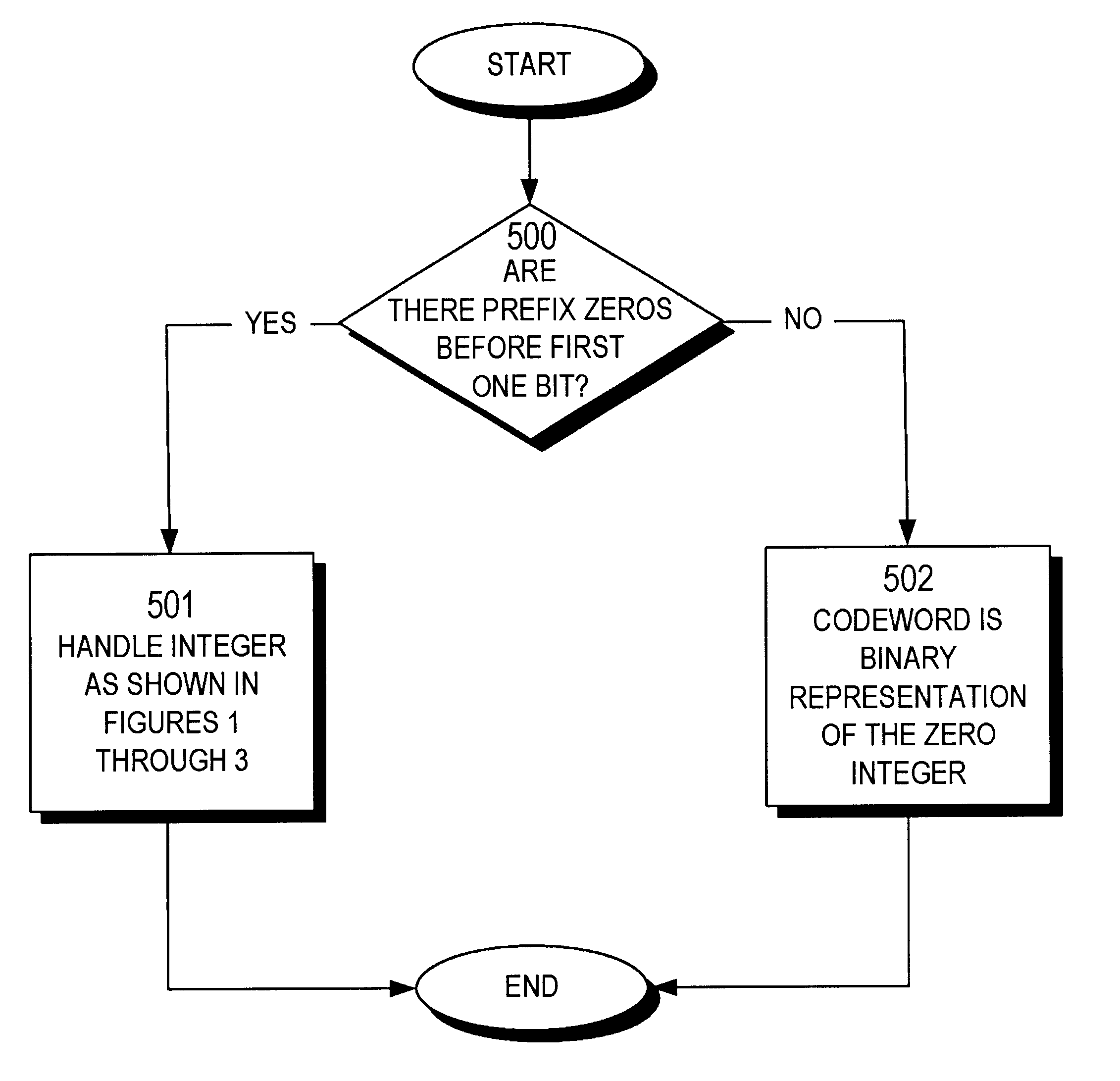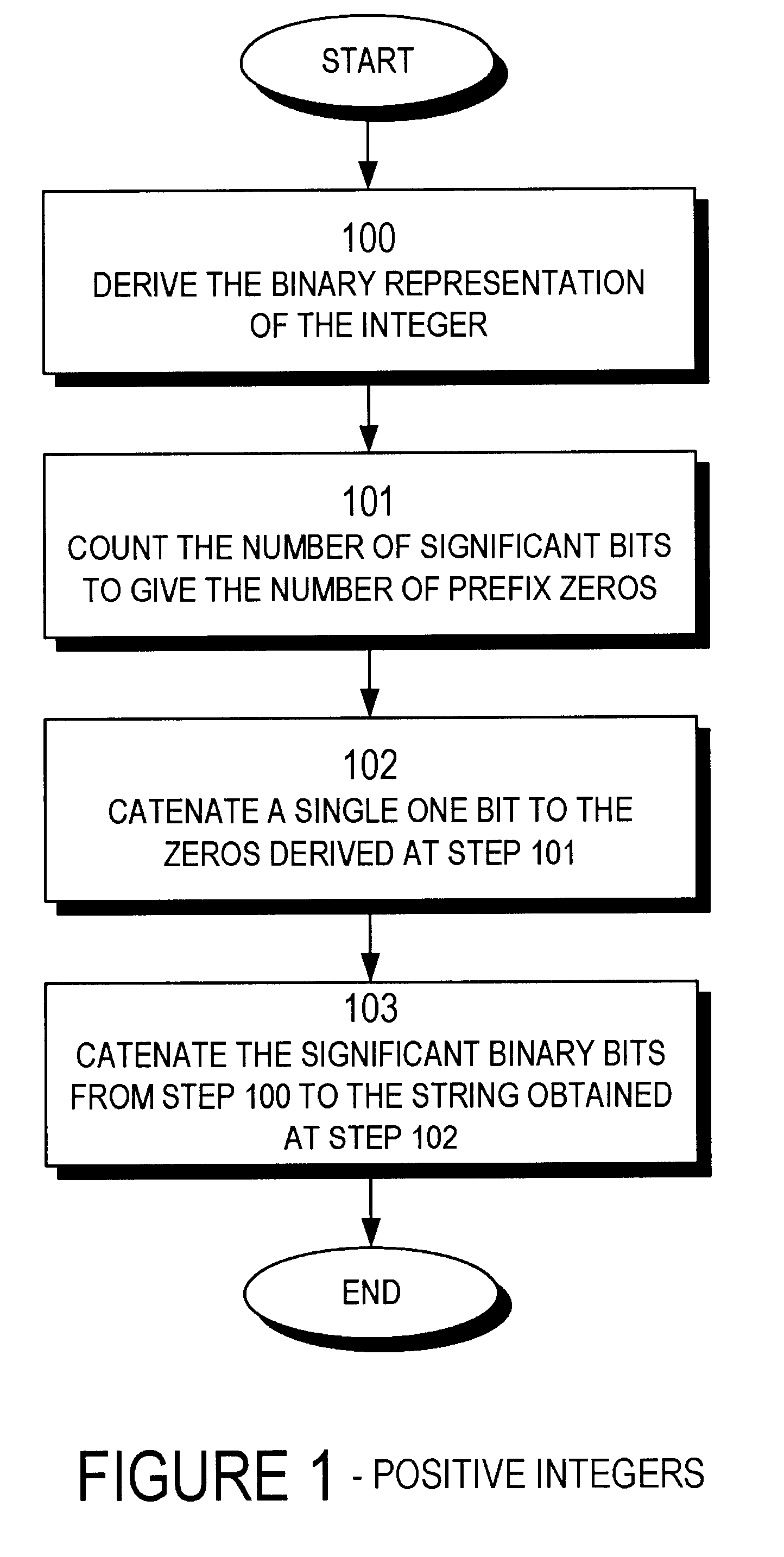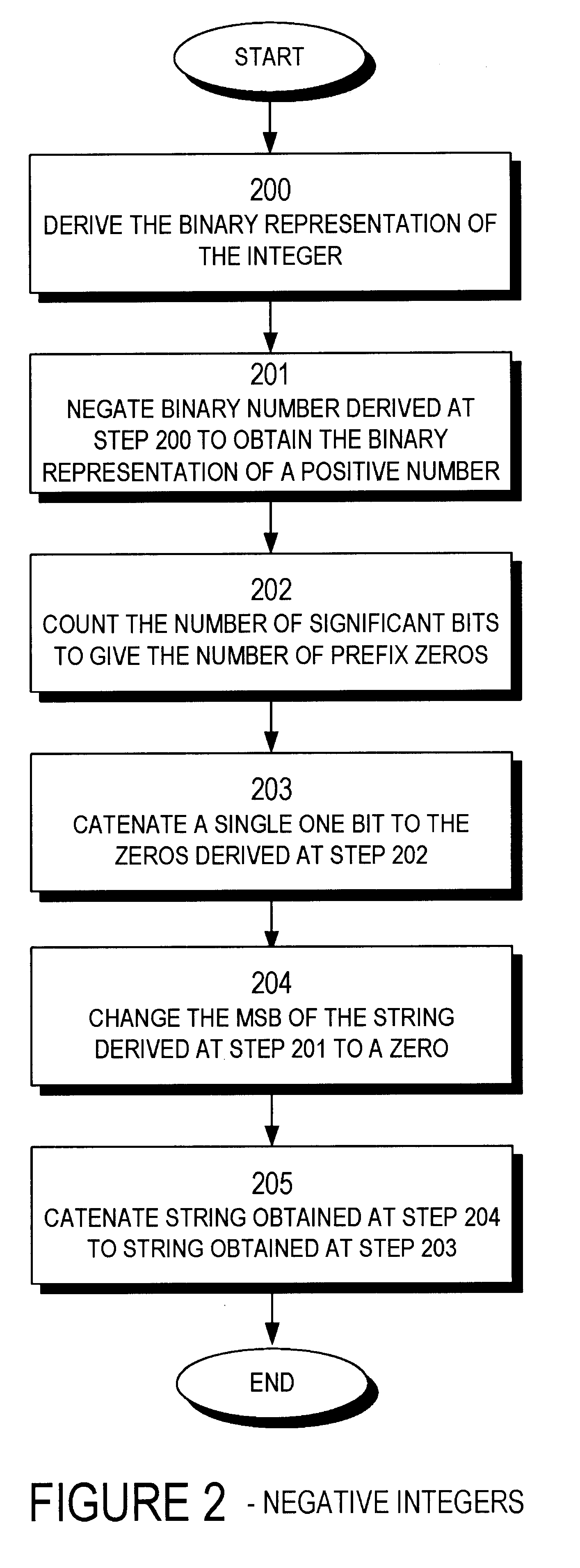Entropy coding using adaptable prefix codes
a prefix code and coding technology, applied in the field of data compression, can solve the problems of difficult compression or decompression schemes, inconvenient compression schemes, and systems that cannot transfer data quickly from files
- Summary
- Abstract
- Description
- Claims
- Application Information
AI Technical Summary
Problems solved by technology
Method used
Image
Examples
Embodiment Construction
As an example, a data string comprising of integers 0, 0, 1, -2, and 4 is first encoded and subsequently decoded using the scheme as explained in FIGS. 1 through 5. Referring to the table, it can be seen that this sequence should code to the following string, namely 11011001000001100.
To encode, we follow steps shown in FIGS. 1, 2 and 4 for each integer in the string. For the first integer, 0, the binary representation is 0. There are no significant bits in 0 so there are no prefix zeros and the single bit 1 is derived to represent 0. At this point the derived string consists of the single bit 1. The next integer is also zero, resulting in an encoded value of 1 and the string now consists of the bits 11.
For the next integer value of 1, there is one significant bit. Thus, a single prefix zero is determined at step 101. A single bit is concatenated to the prefix zeros at step 102. The value of the integer is then represented following the concatenated marker bit following the pre...
PUM
 Login to View More
Login to View More Abstract
Description
Claims
Application Information
 Login to View More
Login to View More - R&D
- Intellectual Property
- Life Sciences
- Materials
- Tech Scout
- Unparalleled Data Quality
- Higher Quality Content
- 60% Fewer Hallucinations
Browse by: Latest US Patents, China's latest patents, Technical Efficacy Thesaurus, Application Domain, Technology Topic, Popular Technical Reports.
© 2025 PatSnap. All rights reserved.Legal|Privacy policy|Modern Slavery Act Transparency Statement|Sitemap|About US| Contact US: help@patsnap.com



